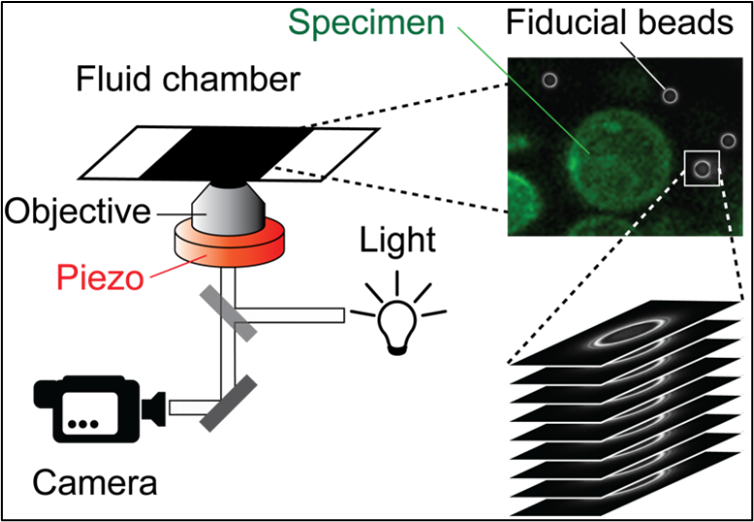
OTT1866
Applications
Designed for a range of microscopy systems used in biological and biomedical research, including fluorescence, confocal, and super-resolution microscopes. It is particularly valuable in settings where high spatial and temporal resolution are critical, such as live-cell imaging, single-molecule tracking, and dynamic intracellular studies.
Target Problems
Axial focal drift is a persistent challenge in high-resolution optical microscopy, particularly during long-term or live-cell imaging. Caused by temperature changes, mechanical instability, or sample movement, this drift leads to loss of focus, reduced resolution, and inconsistent data. Existing correction methods often require bulky hardware, active illumination that can damage samples, or rigid algorithms that lack versatility, and have poor resolution.
Solution:
Real-time drift correction system for optical microscopy: FREVR (Fast Registration of Elongated fiducials for Vertical Resolution).
Key Benefits
- Real-time correction of Z-drift over indefinite amount of time
- Supports extended and high-resolution imaging sessions
- Up to 1 nm focus control
- Compatible with existing microscope platforms and workflows
- Works with any type of water-based sample and 60x-100x objective
- Non-invasive: uses inert fiducials and no active light sources
About this Technology:
This innovation employs stable, elongated fiducial markers placed within or on the sample, combined with rapid image processing algorithms that detect and correct Z-axis drift without requiring mechanical adjustments or active illumination. FREVR is microscope-agnostic, minimally invasive, and capable of operating in parallel with normal image acquisition, making it suitable for both live-cell imaging and high-resolution microscopy.
Stage of Development:
A prototype has been developed and validated in multiple experimental setups. The system has been tested on commercial microscopes and shows compatibility with standard software workflows. Additional development is focused on improving user interface and specific packaging for broader adoption.

Partnering Opportunity
UWM Research Foundation is seeking commercial partners to license this technology.
Intellectual Property
Provisional patent application filed fall 2024.
Inventor(s)
Ionel Popa, PhD, Associate Professor, Physics, UW-Milwaukee
Valerică Raicu, PhD, Professor, Physics, UW-Milwaukee
Michael Stoneman, PhD, Scientists I, Physics, UW-Milwaukee
